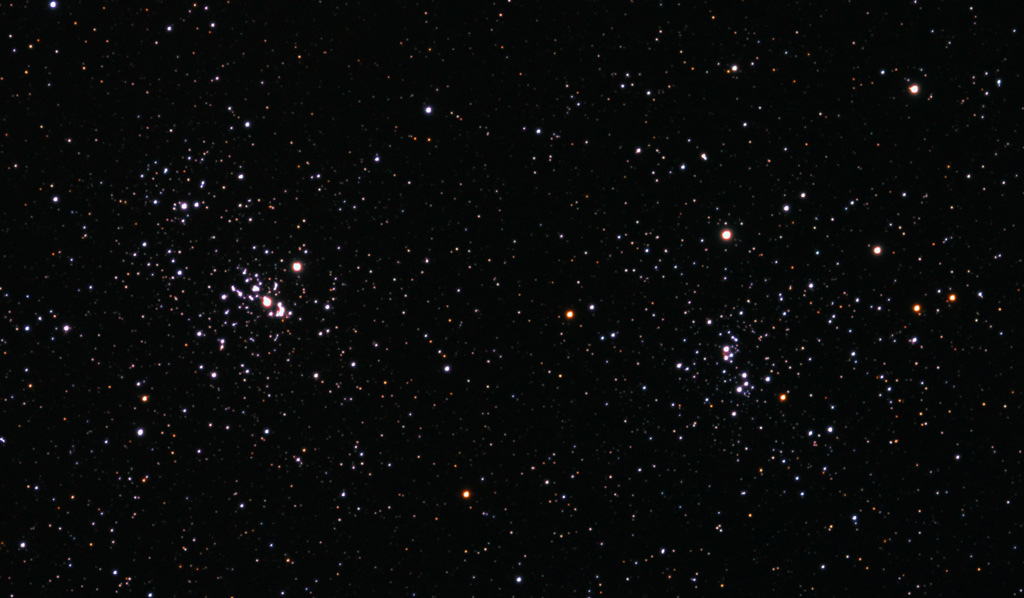This is my picture of NGC869/884, aka the Double Cluster.
Have you ever fathomed the idea that the corner of the galaxy in which we reside, while not being very poor, is missing some sparkle? The stars around us are pretty dully distributed, to be honest, and although I’m not complaining, we could’ve had it much more interesting. If you were a little green man living on a planet somewhere between NGC869 and NGC884, the two components of the renowned Double Cluster of Perseus, you’d be in for an eyeful.
These two clusters, which are at 6800 and 7600 light-years from us, and yet visible with your bare eyes under dark skies, are only 800 light-years from one another. If you were somewhere in the middle, say 150 light-years from the larger one, how would it appear? Let’s do some math.
The brightest stars there have an apparent magnitude of 7. Their absolute magnitude can be calculated as follows:
$latex 7 - 5(Log(\frac{7000}{3.2616})-1) = -4.65$
where 7000/3.2616 is the distance in parsecs. Let us not calculate the apparent magnitude of such stars as seen from a planet only 150 light-years away:
$latex -4.65 + 5 (Log(\frac{150}{3.2616}) - 1) = -1.33$
Imagine200 stars of apparent magnitude -1.33, spread across an area as large as the Triangulum constellation. The light shining from there would be enough for you to read.

